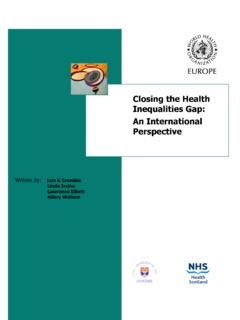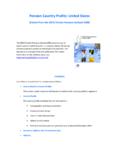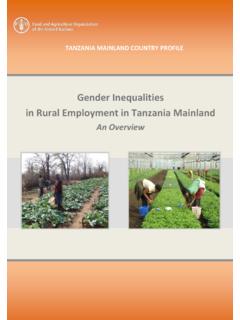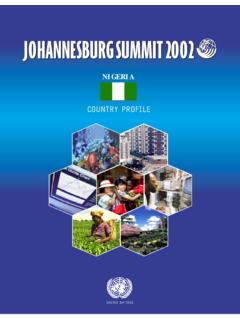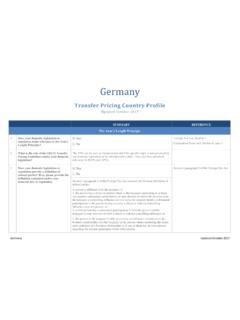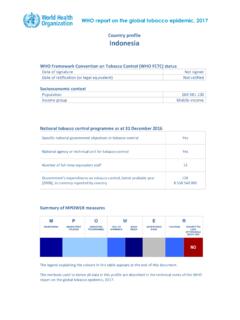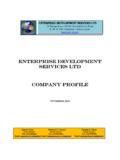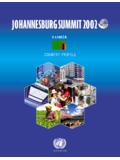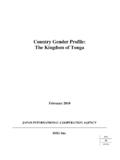Transcription of Nutrition, Physical Activity and Obesity Ireland
1 1 Report on modelling adulthood Obesity across the WHO European Region, prepared by consultants (led by T. Marsh and colleagues) for the WHO Regional Office for Europe in , Physical Activity and Obesity IrelandDemOgrAPhic DAtATotal population4 470 000 Median age (years) expectancy at birth (years) female | male | per capita (US$)46 spent on health (%) and surveillanceOverweight and Obesity in three age groupsAdults (20 years and over)Intercountry comparable overweight and Obesity estimates from 2008 (1) show that of the adult population (> 20 years old) in Ireland were overweight and were obese. The prevalence of overweight was higher among men ( ) than women ( ).
2 The proportion of men and women that were obese was and , respectively. Adulthood Obesity prevalence forecasts (2010 2030) predict that in 2020, 40% of men and 37% of women will be obese. By 2030, the model predicts that 47% of both men and women will be : WHO Global Health Observatory Data Repository (1).This is one of the 53 country profiles covering developments in nutrition, Physical Activity and Obesity in the WHO European Region. The full set of individual profiles and an overview report including methodology and summary can be downloaded from the WHO Regional Office for Europe website: The country codes refer to the ISO 3166-1 Alpha-3 country codes.
3 Data ranking for Obesity is intentionally the same as for the overweight data. BMI: body mass : WHO Global Health Observatory Data Repository (1). Of Overweight AND Obesity (%) AmONg irish ADults bAseD ON whO 2008 estimAtes World Health Organization 2013 All rights regional Office is grateful to the european commission (ec) for its financial support for the preparation of this country profile and the development of the nutrition, Obesity and Physical Activity database that provided data for Of Obesity (%) (bmi kg/m2) AmONg ADults iN the whO eurOPeAN regiON bAseD ON whO 2008 estimAtesPrevAleNce Of Overweight (%) (bmi kg/m2)
4 AmONg ADults iN the whO eurOPeAN regiON bAseD ON whO 2008 estimAtes35302520151050010203040506070 CZEM LTGBRSVNESPIRLTURHUNISRBIHLT ULUXANDDEURUSSVKPRTCYPPOLSRBISLFINBGRHRV NORLVABLRBELAZEKAZMNEARMALBGEOAUTITAMKDE STGRCUKRSWENLDDNKROUFRAMDACHEUZBKGZTKMTJ KMCOSMRNO DATANO DATAA dolescents (10 19 years)In terms of prevalence of overweight and Obesity in adolescents, up to 37% of boys and 23% of girls among 11-year-olds were overweight, according to data from the Health Behaviour in School-aged Children (HBSC) survey (2009/2010).2 Among 13-year-olds, the corresponding figures were 20% for boys and 11% for girls, and among 15-year-olds, 19% and 14%, respectively (2).
5 Children (0 9 years)Estimates from the first round (2007/2008) of the WHO European Childhood Obesity Surveillance Initiative (COSI) show that among 7-year-olds in Ireland , of boys and of girls were overweight and and , respectively, were obese (3).22 Based on 2007 WHO growth WHO Regional Office for Europe grey literature from 2012 on The country codes refer to the ISO 3166-1 Alpha-3 country codes. Data were derived from country-specific publications on surveys carried out in this field, not as part of a European-wide survey. Due to different data collection methods of the country-specific surveys, any comparisons between countries must be made with : WHO Regional Office for Europe grey literature from 2012 on fat intakeAccording to 2007 estimates, the adult population in Ireland consumed of their total calorie intake from saturated fatty acids (4).
6 Notes. The country codes refer to the ISO 3166-1 Alpha-3 country codes. Ranking of data was carried out so that country data at the right-hand side of the graph with values below the FAO recommendation fall within the positive frame of the indicator. FAO: Food and Agriculture Organization of the United : FAOSTAT (4).PrevAleNce Of Overweight (%) iN irish ADOlesceNts (bAseD ON self-rePOrteD DAtA ON height AND weight)11-year-olds13-year-olds15-year-o lds372320111914 Source: Currie et al. (2). Exclusive breastfeeding until 6 months of ageNationally representative data from 2008 show that the prevalence of exclusive breastfeeding at 6 months of age was in Of eNergy frOm sAturAteD fAtty AciDs (%) AmONg ADults iN the whO eurOPeAN regiON, 20071614121086420 FRABELDNKFINAUTSWENLDGRCLVAHUNDEUSVNIRLL UXGBRITAPRTESPPOLM LTROUESTLT UBGRALBANDARMAZEBLRBIHHRVCYPCZEGEOISLISR KAZKGZMCOMNENORMDARUSSMRSRBSVKCHETJ KMKDTURTKMUKRUZBFAO RECOMMENDATION - max.
7 10% energyNO DATAPrevAleNce Of exclusive breAstfeeDiNg (%) uNDer Or At 6 mONths Of Age frOm iNDiviDuAl cOuNtry-bAseD surveys, vAriOus yeArs6050403020100 ANDESTFRAISRMCOPOLPRTRUSSMRSVNGRCGBRBGRI TAIRLLUXBELBLRAUTSWEGEOTKMAZENORCYPCHESR BFINROULVABIHCZENLDUKRMNEISLDEUMKDDNKTJ KUZBLT UESPSVKKAZARMM LTHUNALBTURMDAHRVKGZNO NATIONAL DATAU nder 6 months of ageAt 6 months of ageAt 3, 4 or 5 months of agefruit AND vegetAble suPPly (grAms) Per PersON Per DAy iN the whO eurOPeAN regiON, 2009 Fruit and vegetable supplyIreland had a fruit and vegetable supply of 669 grams per capita per day, according to 2009 estimates (4).120010008006004002000 ANDMCOSMRGEOBGRLVACZEMDASVKLT UFINTJ KDEUPOLESTKGZTKMRUSCHEISLHRVUKRFRASWENOR NLDBLRKAZGBRHUNBELSVNCYPROUAUTESPAZEDNKS RBIRLUZBLUXMKDBIHM LTITAISRPRTALBTURGRCARMMNESalt intakeData from 2007 show that salt intake in Ireland was grams per day for men and grams per day for women (5).
8 TURHUNHRVMKDCZEBGRSVNPRTROUSWEESTESPITAL UXFRACHELT UIRLDNKNORAUTNLDSVKFINGBRISLDEUANDLVABEL ISRPOLCYPALBARMAZEBLRBIHGEOGRCKAZKGZM LTMCOMNEMDARUSSMRSRBTJ KTKMUKRUZBN otes. The country codes refer to the ISO 3166-1 Alpha-3 country codes. Ranking of data was carried out so that country data at the right-hand side of the graph with values above the WHO/FAO recommendation fall within the positive frame of the : FAOSTAT (4).Notes. The country codes refer to the ISO 3166-1 Alpha-3 country codes. Data were derived from country-specific publications on surveys carried out in this field, not as part of a European-wide survey. Due to different data collection methods of the country-specific surveys, any comparisons between countries must be made with caution.
9 Ranking of data was carried out so that country data at the right-hand side of the graph with values below the WHO/FAO recommendation fall within the positive frame of the : WHO Regional Office for Europe (5).Iodine statusAccording to the most recent estimates on iodine status, published in 2012, the proportion of the population with an iodine level lower than 100 g/L was (6, 7). Physical inactivityIn Ireland , of the population aged 15 years and over were insufficiently active (men and women ), according to estimates generated for 2008 by WHO (1). Policies and actionsThe table below displays (a) monitoring and evaluation methods of salt intake in Ireland ; (b) the stakeholder approach toward salt reduction; and (c) the population approach in terms of labelling and consumer awareness initiatives (5).
10 Salt reduction initiativesWHO/FAO RECOMMENDATION - >600 gramsmonitoring & evaluationstakeholder approachPopulation approachLabellingConsumer awareness initiativesIndustry self-reportingIndustry involvementFood reformulationSpecific food categoryBrochurePrintTVRadioWebsiteSoftw areEducationSchoolsHealth care facilitiesConferenceReportingSalt content in food888 Salt intake888 Consumer awareness88888816% salt reduction in bread by 2013 Behavioural change888 Urinary salt excretion (24 hrs)888888 888 Notes. 88 partially implemented; 888 fully : WHO Regional Office for Europe (5).NO DATAsAlt iNtAke (grAms) Per PersON Per DAy fOr ADults iN the whO eurOPeAN regiON frOm iNDiviDuAl cOuNtry-bAseD surveys.









